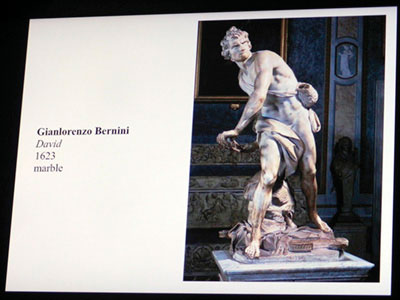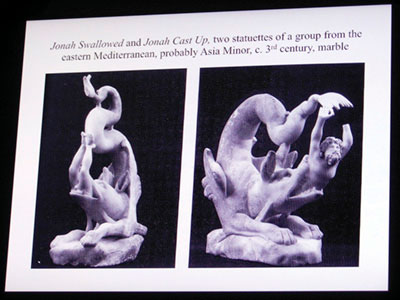
There are a multitude of ways a work of art becomes a masterpiece. While preference plays a role in what pieces are placed in a home, to be critically considered a masterpiece, a painting, sculpture, or piece of literature needs to meet a specific set of criteria – criteria that goes beyond what’s considered “pretty” or “ugly.”
In a lecture on Feb. 13, the Triton Museum of Art’s Chief Curator Preston Metcalf added to the list. Last week, Metcalf explained that art works need to have a bit of ambivalence, irony, strangeness and originality. This week, he went into the checklist further, saying that masterpieces must creatively misread their precursors and possess aesthetic splendor.
“You want to know what aesthetic splendor is?” said Metcalf. “It’s sublime. We know what sublimity is. You know it when you see it. You know it when you feel it … Aesthetic splendor pitches one beyond the dualities of art perceptions. This, by the way, is not only one of the key roles of art – to pitch us out of our sedentary stance. It’s also the role of religion – to pitch us out of our daily existence into something that we are willing to accept as speaking of the transcendent.”

Further, Metcalf went into the details of how a strong work creatively misreads and misinterprets similar works, by showing three very different sculptures of David – Donatello, Michelangelo Buonarroti, and Gianlorenzo Bernini – all considered masterpieces. Each one took the story of David and reinterpreted it to fit the time in which they lived or the statement they wished to make.
“A great work of art – it will copy, it will adapt, it will take the form but it will go beyond that,” said Metcalf. “It will break away from it in some way just like each of those Davids broke away from its precursor. It made a new statement. That’s where the originality comes in.”
To even better define the differences between masterpieces and popular art – although popular art can be masterpieces – Metcalf said that popular art is a celebration of an image, while great art is the celebration of an idea. “Great art can be beautiful,” he said. “It can be popular – Impressionism. Great art can also be horrific. What makes it great is not the aesthetics of or the dualities of beautiful and ugly – it’s the ideas. And the influence of ideas can be traced just as absolutely as the influence of forms or the influence of narratives.”
The lecture series continues on Feb. 20. Metcalf will discuss how a masterpiece must have cognitive power (it has to say something about us) and be a metaphor. Drop in fee is $20. Lectures begin at 7 p.m. at 1505 Warburton Ave. Visit www.tritonmuseum.org for more information.





